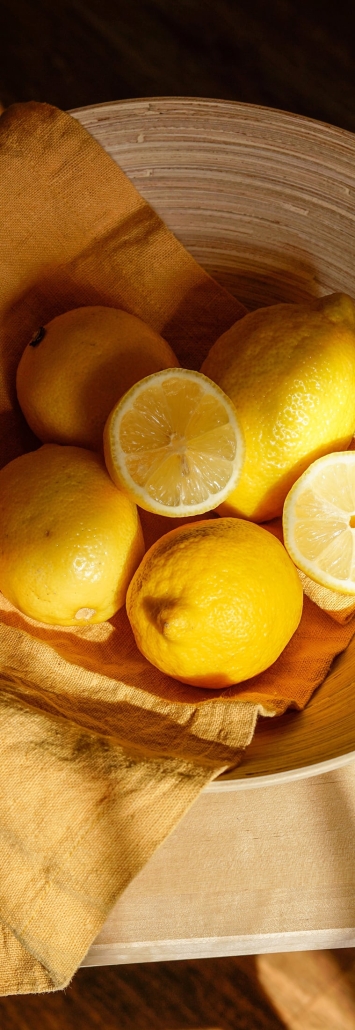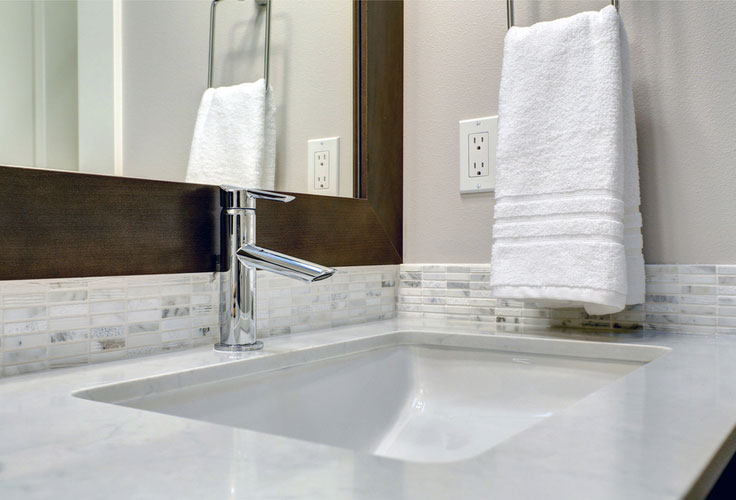You would spray WD-40 up your faucet to loosen a stuck valve or handle. It acts as a lubricant to free up the components.
WD-40, the versatile product known for its lubricating and penetrating properties, often comes to the rescue in household maintenance tasks. Its ability to displace moisture and quickly penetrate stuck parts makes it ideal for addressing issues with faucets, such as hard-to-turn handles or squeaky valves.
Homeowners and DIY enthusiasts regularly use WD-40 for its quick-fix solutions, ensuring that minor problems don’t turn into costly repairs. Spraying this handy lubricant can extend the life of your faucet and improve its functionality, making it an essential item in the maintenance toolkit.

Credit: www.pinterest.com
The Magic Of Wd-40 In Household Fixes
Think of a creaky door, a stuck window, or a stiff bicycle chain. Now think of one solution for all: WD-40. This versatile lubricant has saved the day in homes around the world. But ever heard of spraying it up your faucet? Yes, you read that right. Let’s dive into the magic that WD-40 can work on your household fixtures.
Versatility For Everyday Problems
WD-40 is a go-to tool for lots of household issues. With just a few sprays, many common problems find their fix. Let’s list some reasons to reach for that blue and yellow can:
- Eases stubborn locks. Keys glide in smoothly after a spray.
- Stops squeaky hinges. Doors swing silently post application.
- Battles rust. It frees up rusted tools and parts.
- Cleans. It wipes away grease and grime with ease.
- Displaces moisture. It keeps metal surfaces dry and rust-free.
Breaking Down The Ingredients
The power of WD-40 comes from its special mix. This formula contains:
| Component | Function |
|---|---|
| Aliphatic Hydrocarbons | For loosening and removing dirt. |
| Petroleum Base | Provides lubrication and prevents rust. |
| Non-Volatile Viscosity Modifier | Increases lubricating properties. |
| Carbon Dioxide | Used as a propellant to deliver the product. |
When you spray WD-40 up your faucet, you’re sending this mix of ingredients to tackle calcium deposits and rust. As a result, water flows smoothly, and the faucet works like new.

Credit: www.familyhandyman.com
Common Faucet Problems And Quick Solutions
Are you battling with a stubborn faucet that has seen better days? Quick solutions can bring your faucet back in action, and one such unexpected helper is WD-40. Find out why spraying WD-40 might just be the trick you need in your arsenal to tackle those common faucet woes.
Identifying Faucet Issues
Knowing what’s wrong with your faucet is the first step to fixing it. Here’s how to spot common issues:
- Loose handles: These can cause a lack of control over water flow.
- Dripping: A constant drip signals a worn-out seal or washer.
- Hard-to-move parts: This might mean mineral buildup or corrosion.
- Squeaking sounds: They often point to parts needing lubrication.
Once you identify the problem, it’s time to act. But how? Let’s dive into the do-it-yourself approach.
Diy Approach To Faucet Repair
A quick DIY can save both time and money. These steps can guide you:
- Shut off water: Always turn off the water supply first.
- Disassemble faucet: Carefully take apart the faucet, keeping track of parts.
- Clean parts: Remove any mineral deposit or grime.
- Use WD-40: Spray onto stiff or squeaky parts.
- Replace worn parts: Put in new seals or washers if needed.
- Reassemble and test: After reassembling, check the faucet’s performance.
Tip: Keep a picture diary on your phone to remember the order of parts.
Why WD-40? It’s a great tool for loosening tight parts and stopping squeaks. Spraying a bit up your faucet could help parts move smoother and fix that annoying squeak.
Wd-40: Not Just For Squeaky Doors
Think WD-40 is just for fixing those squeaky doors? Think again! This versatile spray has more tricks up its sleeve than you might expect. Originally designed to protect missile parts from rust and corrosion, WD-40 has found its way into our homes and hearts, solving a multitude of problems.
Expanding the Utility of WD-40Expanding The Utility Of Wd-40
WD-40’s utility goes well beyond just stopping squeaks. It’s a multi-purpose problem solver, beloved by DIY enthusiasts and professionals alike. Its secret lies in the unique formula, which not only lubricates but also displaces moisture, removes grease, and protects metals from rust and corrosion.
From unsticking gum to cleaning tools, it’s no wonder WD-40 has expanded its utility to a must-have in every household.
Unexpected Uses in PlumbingUnexpected Uses In Plumbing
Surprised? Plumbing might not be the first thing that comes to mind with WD-40, but hear us out. Imagine you’re staring at a faucet that just won’t budge. What do you reach for? If you said WD-40, you’re on the right track. Here’s why it works wonders:
- Lubricates: WD-40 helps in loosening tight components.
- Displaces Moisture: It gets rid of water that causes rust and corrosion.
- Cleans: WD-40 can break down lime scale and mineral deposits.
- Prevents Rust: Applying WD-40 on faucets can prevent future rusting.
So next time your faucet fights back, you know the secret weapon to reach for. Give it a spray of WD-40 and watch as it magically loosens, making your plumbing woes disappear like a pro.
Step-by-step Guide To Lubricating Your Faucet
Spraying WD-40 up your faucet can be a simple fix for squeaky handles and tight valves. This guide provides a step-by-step method to ensure your faucet works smoothly and quietly, eliminating the need for costly replacements or repairs.
Gathering The Necessary Tools
Before lubricating your faucet with WD-40, collect the right tools. You will need:
- A can of WD-40
- Adjustable wrench or pliers
- Clean, dry cloth
- Safety glasses (optional but recommended)
Having these items on hand will ensure a smooth and safe workflow.
Applying Wd-40 Correctly
With tools ready, follow these steps to lubricate your faucet:
- Clear the area around the faucet.
- Turn off the water supply to avoid any mishaps.
- Take your adjustable wrench or pliers to remove any parts that may block access to hinge points. Be careful not to damage any parts.
- Shake the can of WD-40 well before using.
- Spray the WD-40 onto the hinge points of the faucet or any stiff components. A short burst is often enough.
- Wipe away any excess WD-40 with a dry cloth to prevent drips.
- Move the faucet back and forth to work the WD-40 into the moving parts.
- Reassemble any removed parts using the adjustable wrench or pliers.
- Turn the water supply back on and test the faucet’s movement.
A properly lubricated faucet will operate smoothly and may help extend its lifespan. Remember to use WD-40 in a well-ventilated area and always follow the manufacturer’s instructions.
Maintaining Your Faucet Post-wd-40 Application
So you’ve sprayed WD-40 up your faucet, aiming to lubricate the moving parts and loosen any debris. The deed is done, but the care for your faucet has just begun. Post-application maintenance is crucial to ensure your faucet continues to operate smoothly and extends its life. The steps below will guide you on how to keep your faucet in top-notch condition after using WD-40.
Routine Checks For Long-term Functionality
Performing routine checks is vital to your faucet’s longevity. Here’s what you need to keep your faucet running:
- Check for leaks – Inspect your faucet and the area underneath the sink regularly for any signs of moisture or drips.
- Test the handle – Make sure the handle moves freely and doesn’t stick or squeak, indicating that the WD-40 is doing its job.
- Monitor water flow – Keep an eye on the faucet’s water flow. It should be consistent and free of sputtering.
Clean regularly – Wipe down your faucet with a damp cloth to prevent buildup of grime and water spots. Use mild soap if necessary.
When To Call A Professional
Sometimes, a situation is beyond a simple WD-40 fix. Recognize when to seek professional help with your faucet:
| Issue | Action |
|---|---|
| Persistent leaks | Contact a plumber |
| Water pressure problems | Seek expert assessment |
| Major part malfunction | Get a professional repair |
If issues like strange noises or inconsistent water temperatures occur, it’s time to call a professional.
Maintain your faucet with care, prioritizing both routine self-checks and knowing when to hand over to a pro!

Credit: www.poolesplumbing.com
Frequently Asked Questions On Why Would You Spray Wd 40 Up Your Faucet
Can Wd-40 Fix A Leaking Faucet?
WD-40 can provide a temporary fix for a leaking faucet by displacing moisture, easing the turn of components, and silencing squeaks. However, it’s not a long-term solution for leaks.
Is Wd-40 Safe For Faucet Lubrication?
While WD-40 is safe for various uses, it’s only a short-term lubricant for faucets. A silicon-based plumber’s grease is the recommended long-term solution.
How Does Wd-40 Help With Faucet Maintenance?
WD-40 helps clean mineral deposits and grime, making it easier to dismantle and maintain faucet parts during repair or routine cleaning.
Does Spraying Wd-40 Unclog Faucet Aerators?
Spraying a small amount of WD-40 can help loosen mineral build-up, simplifying the process of cleaning or replacing a clogged faucet aerator.
What’s The Effect Of Wd-40 On Faucet Seals?
WD-40 can cause rubber seals to swell and degrade over time; using products specifically designed for faucet seals is advisable for lasting repair work.
Conclusion
Wrapping up, WD-40’s versatility extends even to faucet upkeep. By tackling hard water deposits and rust, it helps maintain smooth operation and prolongs your fixture’s life span. Remember, a targeted spray can prevent costly plumbing repairs, keeping water flowing and faucets turning with ease.
Embrace this household hack for a hassle-free home maintenance experience.




Leave a Reply